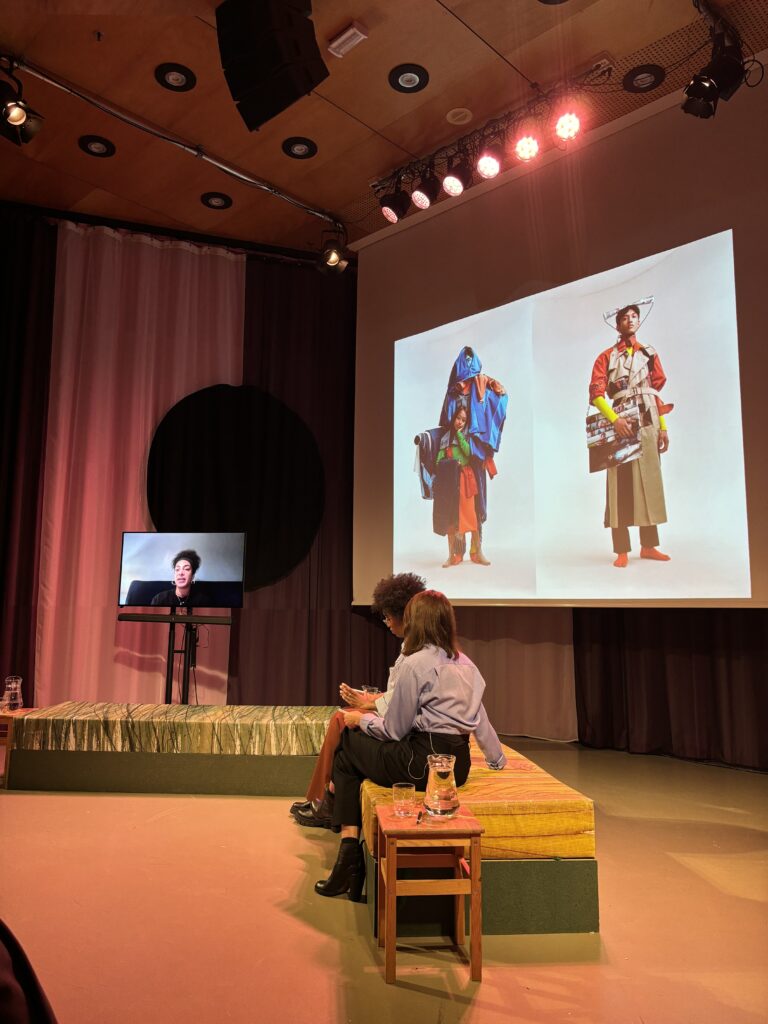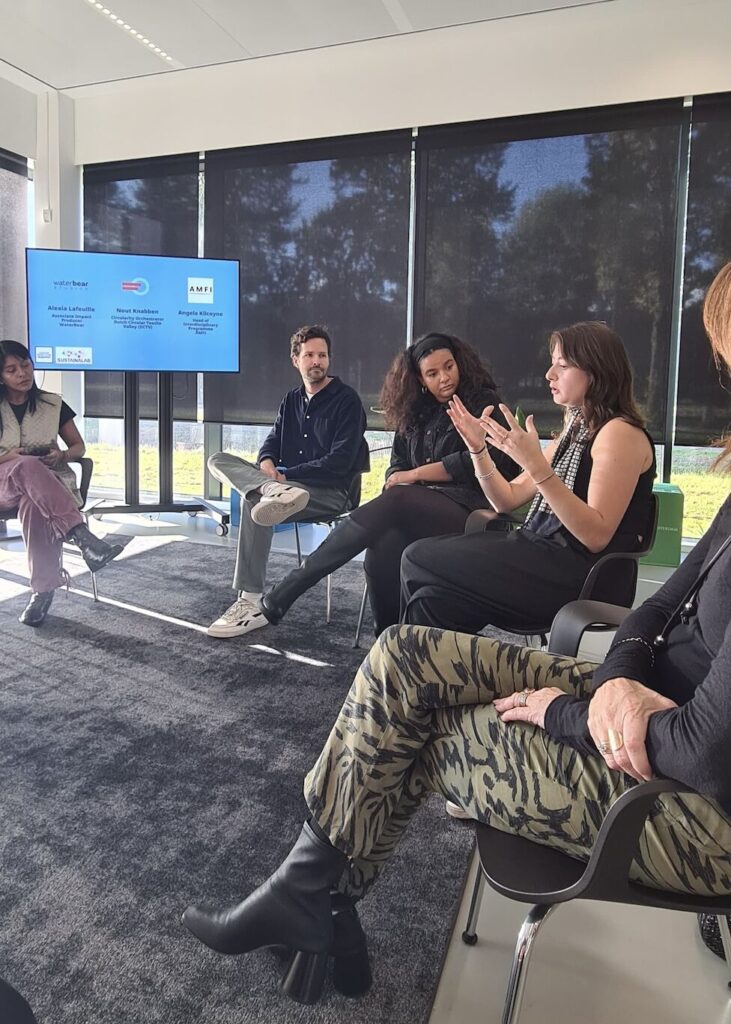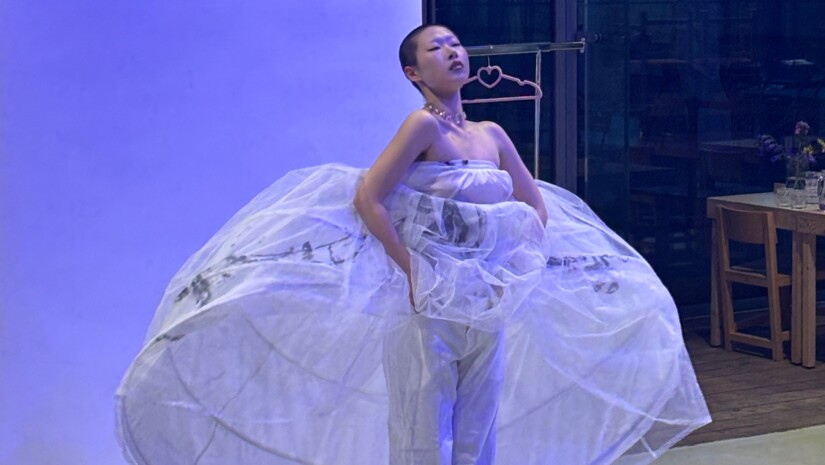Over the past few weeks in the lead up to, and during Dutch Sustainable Fashion Week (DSFW) we had the opportunity to engage with a wide range of designers, policy makers, entrepreneurs and stakeholders that are actively working toward a more sustainable fashion industry. One thing that was made abundantly clear during this time is that the fashion industry is at a pivotal moment of transformation. There is an urgent need to confront the traditional structures of mass production, linear economies and unethical labour that dominate the current industry, and we increasingly need to radically rethink and come up with new approaches to our fashion systems.
Luckily, we are not short of innovative people that are pushing the boundaries when it comes to defining how we make, re-make, recycle, rent, sell, re-sell and wear our clothes. We had the fortunate opportunity to engage with some dynamic creators, organisations, storytellers, educators and companies such as WEAR, The United Repair Centre, Hulaaloop, Patchwork Family, Fashion in Flux, Alhuwalia, Waterbear, Manufy, Sepehr Maghsoudi and the Dutch Circular Textiles Valley, to name a few. As these organisations continue to develop solid footing in the industry to steer it in a new direction, an interesting question becomes, what do we consider success in the context of a sustainable fashion industry and how does that translate into growth.

Success in the context of the current industry is rooted in profit and growth, and is mainly characterised by increasing in size or scaling. This has meant the development of massive production lines, large inventories, and a continuous, escalating cycle of demand stimulation. This model relies on economies of scale to lower costs and generate profit margins, but it inherently leads to waste and the unsustainable use of finite resources.
Currently, 92 million tons of textile waste are generated by the fashion industry annually, equivalent to one garbage truck full of clothes dumped every second. Less than 1% of clothing material is recycled into new garments, leading to massive landfill waste. Additionally, the fashion industry uses around 79 trillion litres of water per year and textile dyeing is the second-largest polluter of water globally, with 20% of industrial water pollution traced to garment production. The global fashion industry is responsible for 8-10% of global carbon emissions, more than all international flights and maritime shipping combined and if there are no drastic changes, the industry’s carbon emissions are expected to surge by 50% by 2030. On top of this, 80% of the world’s garment workers are women, often earning less than $3 per day in poor working conditions with long hours and limited rights. (Statistics from the Clean Clothes Campaign, Fashion Revolution and the Ellen MaCarthur foundation)
However, during DSFW, we were shown how different parties are not only shifting the industry toward more circular and sustainable models but, redefining the very notion of scale. Brands such as Wear, The Patchwork family and Alhuwalia show us that instead of maximising production, the focus has shifted to resource optimization, longevity, and regeneration. Here, scale is no longer about quantity, but about resilience and adaptability. Success is no longer measured by how many garments it produces, but by how well it can extend the life of those garments, reduce resource extraction, and minimise waste.
During a panel at Sustainalab, we were given an insight into how companies like Manufy show brands that scale in the context of circular fashion means moving from “bigger is better” to a more nuanced understanding of growth. Growth in a circular economy could mean designing for longevity, creating modular or repairable clothing, and investing in take-back or recycling programs that close the loop on textiles. It also challenges the idea that scale is about producing more goods for more people at cheaper prices. Instead, scale can mean different things, for example creating networks of local production hubs, fostering deep connections with suppliers, and prioritising small-batch, custom, or on-demand production models.

Companies such as the United Repair Centre and Hula Loop showed us that a shift in scale requires new business models that reward quality over quantity and prioritise a system that loops materials back into production, whether through renting, recycling, upcycling, or innovative materials.
As a whole, DSFW showed us that scaling does not have to be about reaching everyone with a single offering. Rather, it’s about meeting the needs of diverse communities in ways that are context-specific. Local sourcing, small-batch production, and transparency in supply chains must be scalable, not in terms of volume, but in their adaptability to different regions, cultures, and consumer bases. Scaling can be about cultivating deeper relationships with supply chains, ensuring fair wages and sustainable practices across all levels of production, and collaborating across industries to innovate and share resources. Scaling circular and sustainable fashion requires embedding these principles into the DNA of businesses, where profitability and sustainability are not mutually exclusive but mutually reinforcing.
DSFW gave the impression that in a circular and sustainable fashion context, scale can be redefined from quantity to impact. It’s no longer enough to measure success by the number of units sold or the speed of production. Instead, the industry can measure its impact in terms of resource efficiency, environmental regeneration, human well-being, and system resilience.
Sophie Tendai Christiaens
